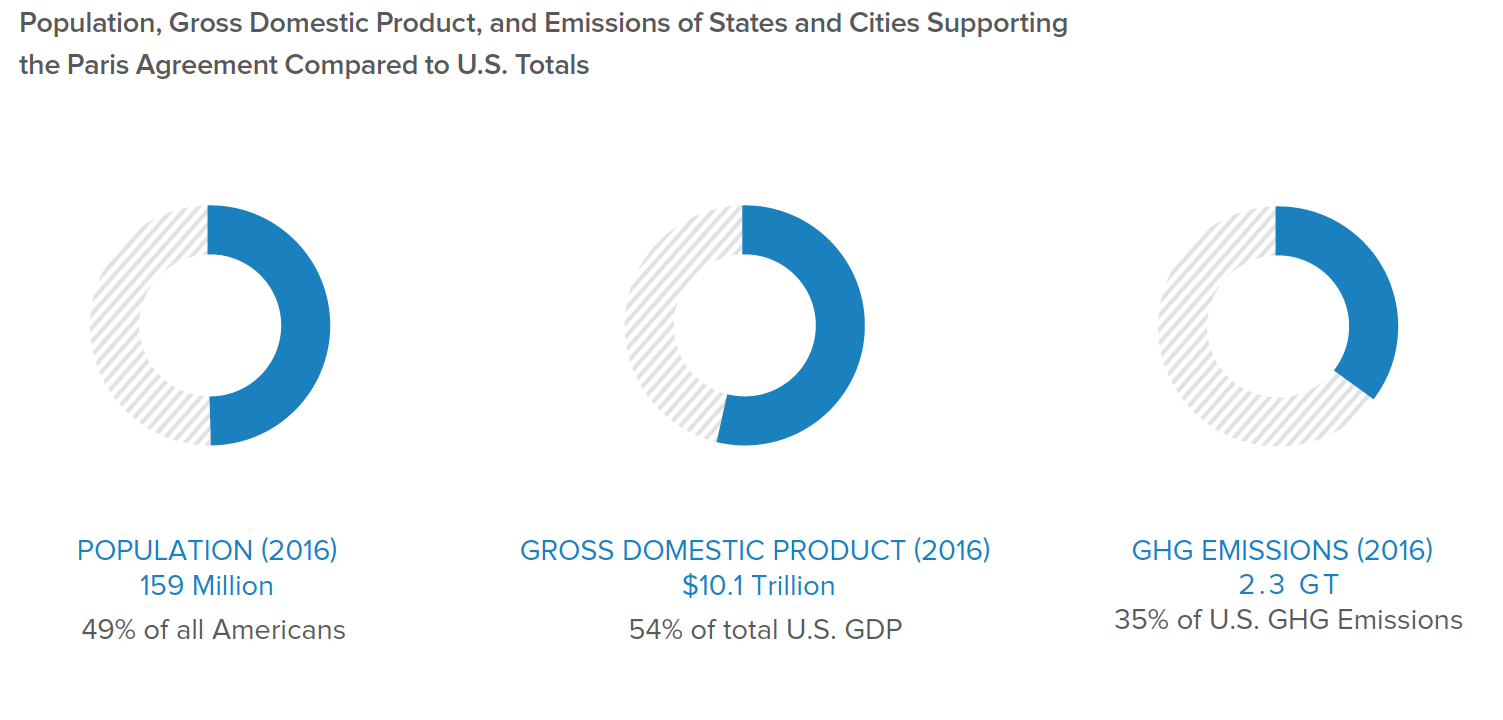
The New Face of American Leadership on Climate Change
It’s official: U.S. states, cities, and businesses have emerged as the new face of American climate leadership on the global stage. Today, November 11, 2017 at the United Nations climate conference in Bonn, California Governor Jerry Brown and former New York City Mayor Michael Bloomberg unveiled the first product of the America’s Pledge initiative launched in the wake of President Trump’s announced intention to withdraw from the Paris Agreement. The America’s Pledge phase one report presents a detailed portrait of climate action by U.S. states, cities, and business and how these efforts have set the U.S. economy on the path to low-carbon transformation. Analysis for the report was co-led by Rocky Mountain Institute and the World Resources Institute. RMI CEO Jules Kortenhorst joined Brown and Bloomberg onstage for the announcement at the U.S. Climate Action Center, a dazzling purpose-built pavilion established to represent over 2,500 members of the We Are Still In coalition.
The report—which presents original analysis on the scale and scope of climate action as well as the economic context within which states, cities, and businesses are stepping up—features the following key findings:
- States and cities representing more than half of the U.S. economy have declared their support for the Paris Agreement. If these non-federal actors were a country, they would be the world’s third-largest economy. In addition, over 1,300 businesses representing $25 trillion in market capitalization and over 500 universities have adopted greenhouse gas emissions-reduction targets akin to the Nationally Determined Contributions of Paris Agreement Parties.
- These commitments and actions, combined with falling clean technology prices and emerging market innovations, are driving the low-carbon transformation of the U.S. economy. Between 2005 and 2015, the U.S. economy grew by 15 percent, while net greenhouse gas emissions fell by 11.5 percent. This transition is most pronounced in the power sector, where emissions have declined by 24 percent between 2005 and 2016.
- While this progress is encouraging, the decarbonization of the U.S. needs to accelerate to hold within reach America’s pledge to reduce its emissions by 26–28% by 2025 compared to 2005 levels—particularly in the face of federal inaction. The report highlights many opportunities for non-federal actors to step up their ambitions, including:
- Commitments to generate or procure 100 percent renewable energy. We can move beyond current renewable energy commitments—including the 29 states with mandatory renewable portfolio standards, 43 cities with 100 percent renewable energy goals, and businesses that have signed over 9 GW of renewable energy deals in the past five years.
- Collaborating to procure zero emission vehicle (ZEV) fleets and build out supporting infrastructure. Large fleet owners and operators, including cities, businesses, and universities have an opportunity to work together on purchasing ZEVs and, along with utilities, on developing the necessary charging infrastructure.
- Working together to adopt and enforce ambitious building energy codes. Today, thirty-five of the largest 51 cities are developing or have already adopted energy reduction goals. To help meet these goals, cities can work with both states and the real estate industry on new and ambitious building-energy codes to optimize the energy and environmental performance of both new and existing buildings.
The phase one report is just the beginning of the America’s Pledge project. In the course of 2018, the America’s Pledge initiative will work not only to quantify the potential of U.S. non-federal action toward further climate progress, but also to provide a roadmap for strategic, coordinated, and sustained action by businesses, cities, and states. Strengthening and accelerating that momentum will be an essential basis for reengagement of the federal government on climate and clean-energy policy in the future.


